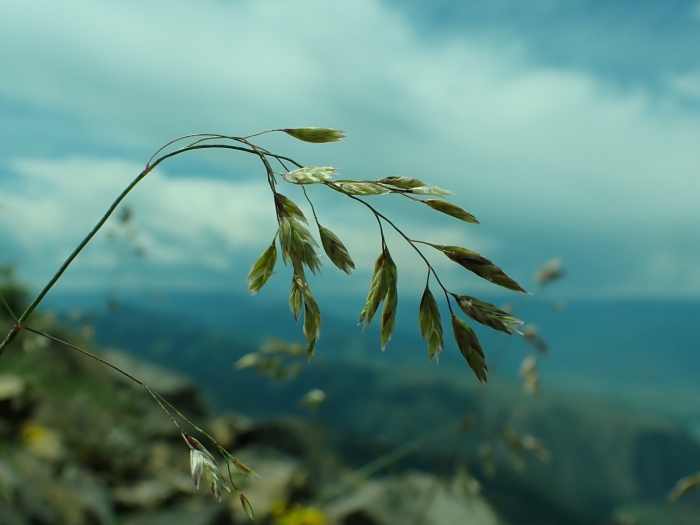Long-Stolon Bluegrass
(Poa nervosa)
Long-Stolon Bluegrass (Poa nervosa)
/
/

© Matt Lavin
CC BY 4.0
Image By:
© Matt Lavin
Recorded By:
Copyright:
CC BY 4.0
Copyright Notice:
Photo by: © Matt Lavin | License Type: CC BY 4.0 | License URL: http://creativecommons.org/licenses/by/4.0/ | Uploader: mattlavin | Publisher: iNaturalist |

























Estimated Native Range
Summary
Poa nervosa, commonly known as long-stolon bluegrass, is a perennial grass native to moist meadows, open woodlands, and grassy slopes in western North America. It is characterized by its extensive stolon formation, which allows it to spread effectively across the ground. This grass typically grows in clumps and reaches a modest height, usually not exceeding 2 feet. Its leaves are fine-textured and bright green, with a distinctive nerve pattern that runs the length of each blade, hence the name "nervosa." The inflorescences are open and airy, with a subtle bluish tint, appearing in late spring to early summer.
Long-stolon bluegrass is valued for its ability to stabilize soil and prevent erosion, making it useful for restoration projects and naturalized areas. It is also used in low-maintenance lawns and as a ground cover in shaded gardens. It prefers moist, well-drained soils and can tolerate partial shade, although it thrives in full sun. While it is not typically known for disease problems, its aggressive stoloniferous growth can be a concern if not managed properly. Gardeners should be cautious about planting Poa nervosa in areas where it could become invasive.CC BY-SA 4.0
Long-stolon bluegrass is valued for its ability to stabilize soil and prevent erosion, making it useful for restoration projects and naturalized areas. It is also used in low-maintenance lawns and as a ground cover in shaded gardens. It prefers moist, well-drained soils and can tolerate partial shade, although it thrives in full sun. While it is not typically known for disease problems, its aggressive stoloniferous growth can be a concern if not managed properly. Gardeners should be cautious about planting Poa nervosa in areas where it could become invasive.CC BY-SA 4.0
Plant Description
- Plant Type: Grass
- Height: 2-3 feet
- Width: 1-2 feet
- Growth Rate: Slow
- Flower Color: N/A
- Flowering Season: Spring, Summer
- Leaf Retention: Deciduous
Growth Requirements
- Sun: Full Sun, Part Shade
- Water: Medium
- Drainage: Fast, Medium
Common Uses
Border Plant, Deer Resistant, Low Maintenance, Rabbit Resistant
Natural Habitat
Moist meadows, open woodlands, and grassy slopes in western North America
Other Names
Common Names: Whisky Grass, Nerved Bluegrass, Hooker’s Bluegrass, Veiny Bluegrass, Himalayan Blue Grass
Scientific Names: , Poa nervosa, Festuca nervosa, Poa columbiensis, Poa nervosa var. nervosa, Poa pulchella var. major,
GBIF Accepted Name: